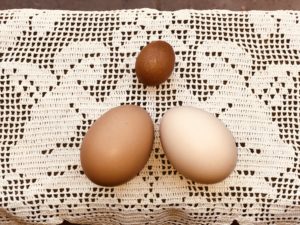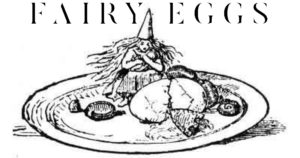Fairy Eggs! Tiny Surprises from your Chickens

Fairy eggs, also called “wind”, “witch”, “cock” or “fart” eggs, are much smaller than regular eggs and usually contain no yolk. They are the result of a common glitch in the laying process. Fairy eggs often occur very early in a hen’s productive life before her hormones and reproductive cycle are working properly. Sometimes, however, they may occur very late in a hen’s laying life as her hormone production is winding down. They can also be the result of stress, a new diet, new flockmates, environmental changes, or a disruption of routine.
Fairy eggs come in all the colors that hens lay: white, brown, green, blue, pink, and beige. Sometimes they may be lighter or darker than regular eggs since they may spend more or less time in the hen’s shell gland pouch. This deposits pigments in the final stage of egg making. Fairy eggs are nothing to be concerned about and are fine for humans to eat.

While I find the nickname “fairy eggs” to be quite endearing, these miniature eggs have had several names through the ages. In the Middle Ages, they were called “cock” eggs, since, without a yolk, the egg wasn’t viable, and was believed to be laid by roosters. They were also referred to as “witch” eggs, which were believed to be the work of the devil. According to superstition, to protect against the evils of a cock egg, one should throw it over the roof of the family house and let it smash on the ground on the other side. In Scotland and other European countries, the eggs are referred to as “wind” eggs. More recently in the US, they have been labeled with the indelicate moniker “fart” eggs.
Sometimes, we need to believe in fairy tales. And fairy eggs. It’s the little things in life, after all!